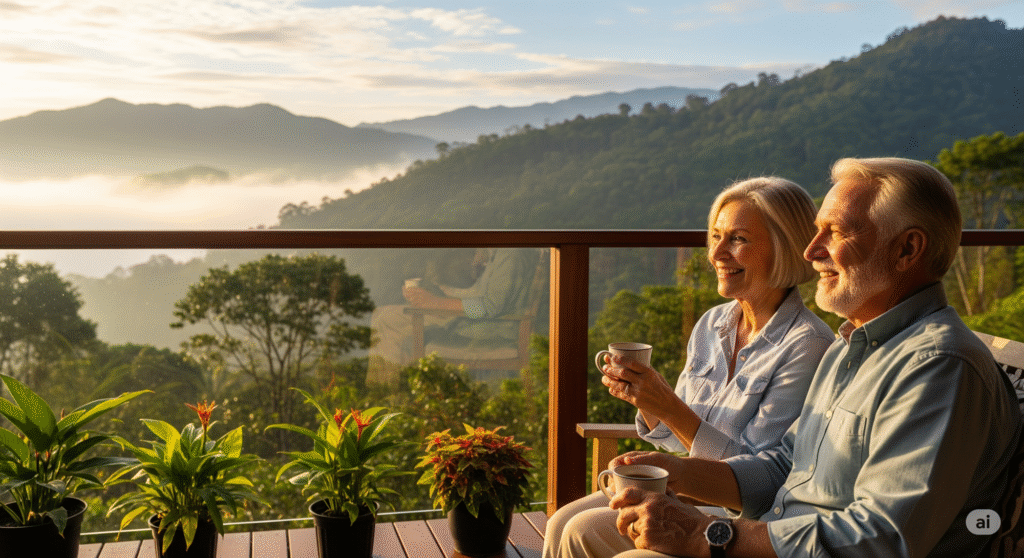
Why Panama is a Top Retirement Destination
For many retirees, Panama is more than just a place to spend their golden years—it’s a lifestyle upgrade. With a stable, dollarized economy, welcoming communities, and a variety of climates to choose from, Panama has consistently ranked among the best retirement destinations in the world.
One of the main reasons is the Pensionado Visa Program, widely considered one of the most generous retirement residency programs anywhere. You only need to show a monthly lifetime pension or retirement income of at least $1,000, and in exchange, you receive permanent residency and a long list of perks—discounts on everything from restaurant meals and travel to utility bills and medical services.
“When my wife and I decided to retire, we wanted a place with a lower cost of living, great weather, and a slower pace of life. After extensive research, we chose Panama, and I can honestly say it’s been the best decision we’ve ever made,” recalls one retiree. “The Pensionado Visa makes you feel like a VIP, with real savings on daily expenses. And the fact that Panama uses the US dollar made the transition incredibly easy.”
Beyond the visa program, retirees benefit from Panama’s excellent connectivity. Tocumen International Airport, known as the “Hub of the Americas,” offers direct flights to major cities in North and South America, making it easy to visit family or explore the region.
Understanding the Pensionado Visa Program
Eligibility Requirements
To qualify for the Pensionado Visa, you must provide proof of a lifetime pension or retirement income of at least $1,000 per month. Married couples can combine incomes, and those who purchase property worth $100,000 or more can qualify with a slightly lower income threshold.
Step-by-Step Application Process
- Gather Documents: Pension statements, proof of income, passport copies, and background checks.
- Hire a Local Attorney: Required to navigate the application process.
- Submit Application: To the Panamanian immigration office.
- Receive Temporary Residency: While your permanent residency is processed.
- Obtain Permanent Residency Card: Usually within a few months, depending on processing times.
Exclusive Benefits for Pensionados
Holders of the Pensionado Visa enjoy discounts such as:
- 50% off entertainment and recreation
- 30% off public transportation
- 25% off utility bills
- 20% off medical consultations and medications
Cost of Living for Retirees in Panama
Panama offers a quality of life that, for many retirees, would cost twice as much in their home countries.
“Our budget here gives us a standard of living that would have been double the cost in the United States,” explains the same retiree. “Fresh food is affordable, and eating out at a casual restaurant is inexpensive. Healthcare was a major factor for us, and private medical care here is high-quality and affordable, especially with Pensionado discounts.”
Housing and Real Estate Options
From beachfront condos to mountain villas, housing costs in Panama vary widely. In Panama City, a modern two-bedroom apartment might rent for $1,200–$1,800 per month, while in smaller towns or rural areas, you can find similar properties for under $800.
Healthcare Quality and Affordability
Private healthcare is a major draw for retirees. Many doctors are trained abroad and speak fluent English. Costs for consultations range from $20–$60, and health insurance plans for expats are significantly cheaper than in the US.
Daily Expenses
Groceries, transportation, and entertainment are all more affordable than in most Western countries. A couple can live comfortably in Panama for $1,500–$3,000 per month, depending on lifestyle choices.
Tax Considerations for US and Foreign Retirees
Panama’s Territorial Tax System
Panama taxes only income earned within its borders. Foreign-sourced income is not subject to Panamanian taxes, making it highly attractive for retirees with overseas pensions or investments.
How US Retirees Can Manage Their Tax Obligations
US citizens remain subject to US taxes regardless of where they live. However, the Foreign Earned Income Exclusion (FEIE) and Foreign Tax Credit can reduce or eliminate double taxation.
Avoiding Double Taxation
By working with a tax advisor familiar with both Panamanian and home-country tax laws, retirees can maximize benefits and minimize liabilities.
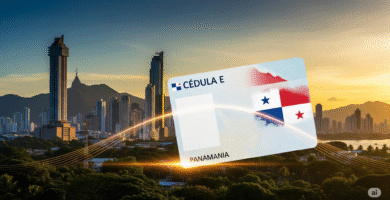
Permanent Residency in Panama (2025): Complete Expat Guide
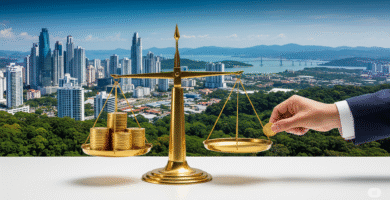
Taxes in Panama: Complete 2025 Expat & Business Guide

Panama Friendly Nations Visa 2025: Complete Expat Guide
Best Places to Retire in Panama
Panama offers diverse living environments, from cosmopolitan cities to tranquil mountain towns.
Panama City
Ideal for those who want modern conveniences, vibrant culture, and proximity to healthcare facilities.
Boquete
Located in the Chiriquí Highlands, Boquete offers cooler weather, lush landscapes, and a thriving expat community.
“Friends of ours moved to Boquete for its cooler climate, while we chose a Pacific coast beach town. That’s the beauty of Panama—you can go from the beach to the mountains in just a couple of hours,” says the retiree.
Coronado
A popular beach destination with a mix of local and expat residents, just 1.5 hours from Panama City.
Financial Planning Tips for a Smooth Retirement
Opening a Bank Account in Panama
This can be a lengthy process, requiring proof of income, residence, and source of funds. Patience is essential due to strict compliance regulations.
Managing International Investments
Many retirees keep investments abroad to take advantage of global markets while benefiting from Panama’s favorable tax environment.
Estate Planning and Legal Considerations
Seek advice from legal professionals to ensure your will and assets are recognized under Panamanian law.
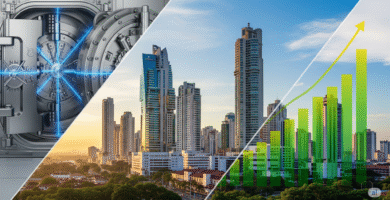
Finance in Panama: A Complete Guide for Expats & Nomads

Moving to Panama: Complete Guide to Visas, Costs, and Safe Relocation
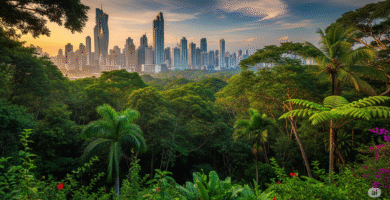
Living in Panama: Insider Guide to Costs, Safety, and Lifestyle (2025)
Common Challenges for Retirees and How to Overcome Them
Even in paradise, there are adjustments to make.
“While life here is fantastic, it’s not a fairy tale,” the retiree warns. “You have to be patient with bureaucracy and get used to a slower pace. The people are warm and welcoming, but success here comes from keeping an open mind and being ready to adapt.”
Adapting to Local Bureaucracy
Processes like property registration, driver’s licenses, and permits can take longer than expected.
Navigating Healthcare as a Foreigner
While healthcare is excellent, language barriers may arise outside major cities—though most doctors speak English.
Integrating into Local Communities
Joining clubs, volunteer groups, and expat associations can make the transition smoother.
Conclusion: Making the Most of Your Retirement in Panama
Panama offers retirees a winning combination: a stable economy, a favorable visa program, affordable healthcare, and a diverse range of living environments. With the right financial planning and an open mindset, you can enjoy a fulfilling retirement in a country that blends modern comforts with tropical charm.
5 Frequently Asked Questions (FAQs)
1. Can foreigners retire in Panama?
Yes, through the Pensionado Visa program, which offers permanent residency and significant benefits.
2. How much money do I need to retire in Panama?
A couple can live comfortably on $1,500–$3,000 per month, depending on location and lifestyle.
3. Is healthcare good in Panama?
Yes, private healthcare is high-quality, affordable, and widely available in major cities.
4. Do retirees pay taxes in Panama?
Only on income earned within Panama. Foreign pensions are tax-free.
5. What’s the best place to retire in Panama?
It depends on lifestyle preferences—Panama City for urban living, Boquete for cool mountain air, Coronado for beach life.
